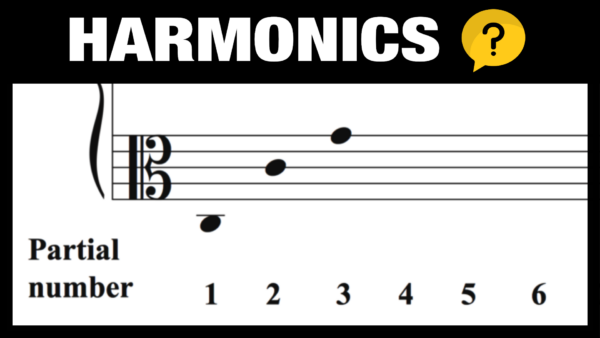 Do you want to learn what harmonics are in music, and how they actually define the overall tone of any sound you play?
Do you want to learn what harmonics are in music, and how they actually define the overall tone of any sound you play?
Any note you play on any instrument has a fundamental frequency. This is the lowest frequency, the note you play. Let’s say you play a C in the second octave. Then that is the fundamental.
Now you can clearly hear higher frequencies than this fundamental, and that is because you also hear the harmonic overtones of the fundamental.
Every harmonic overtone above the fundamental is called a “partial”. This is what harmonics are in music, a balance of the harmonic overtones of the note you play.
Every instrument, and the way you play them, will affect the distribution and balance of the partials (harmonic overtones) of the sound. And you can even play some instruments in a way that diminishes the fundamental, and elevates a partial (harmonic overtone).
This is often simply called to play “harmonics”. And it will create a shimmering, fragile sound that will have a very light, thin and almost magical tone.
Harmonics Chart
Now, the reason why you have harmonics (partials) is because the fundamental will have “mirror images” that are multiples of the fundamental frequency. Basically, if the fundamental is 100Hz, you will have the first partial (harmonic overtone) at 200Hz, because it a multiple of 2 of the fundamental.
This will give you the following chart for the harmonic overtone series. Let’s use 100Hz as an example of the fundamental:
- Fundamental Frequency = X (100Hz)
- 1st Overtone = 2X (200Hz)
- 2nd Overtone = 3X (300Hz)
- 3rd Overtone = 4X (400Hz)
- etc.
Harmonic Overtone Series
Now you know the reason why the harmonic overtone series exists. The fundamental basically resonates in multiples of itself. But how does this relate to the notes?
This is important because it will show you why certain degrees have more focus, like the unison, octave and the perfect 5th. Since they are more prominent in the overtone series.
Here’s a chart of the harmonic overtone series (up to the 16th partial), using the note “A” as the fundamental, but please remember that the overtone series is the same regardless of which note you start on:
[table id=2 /]
